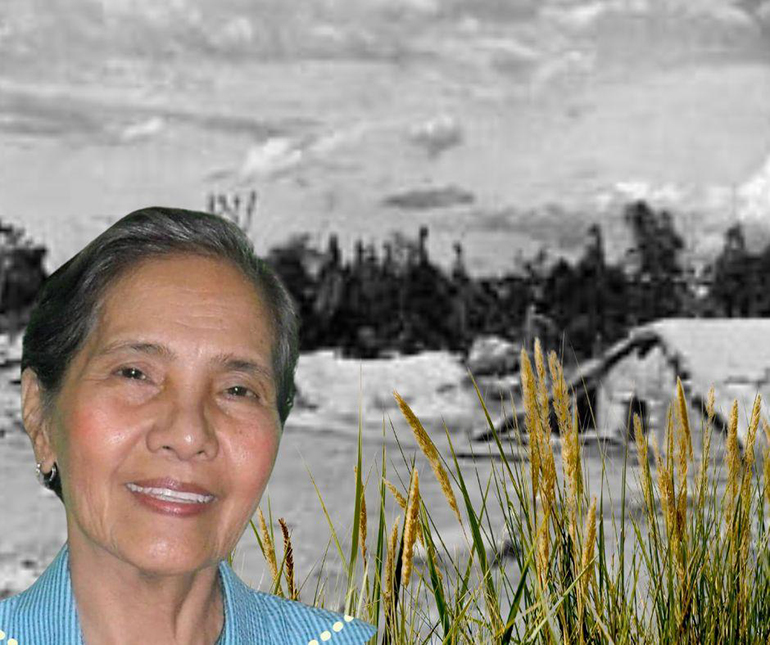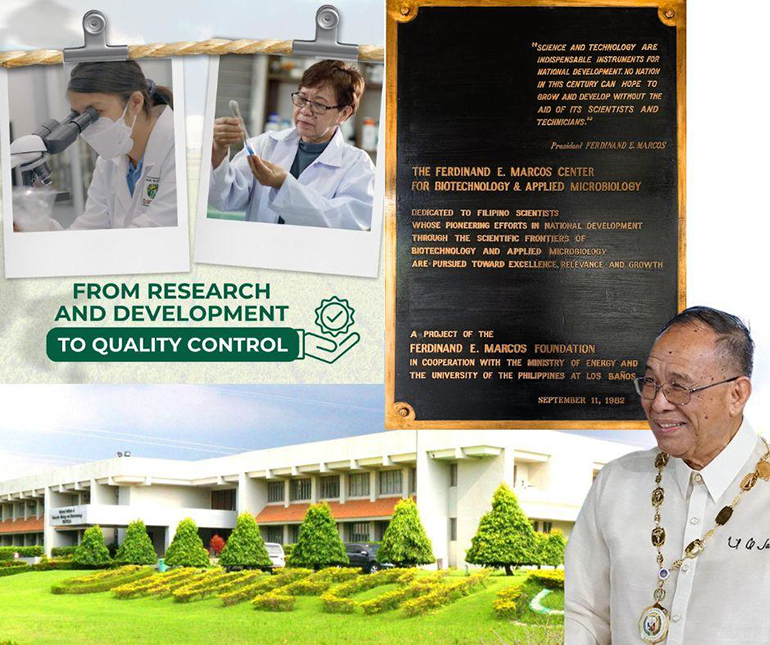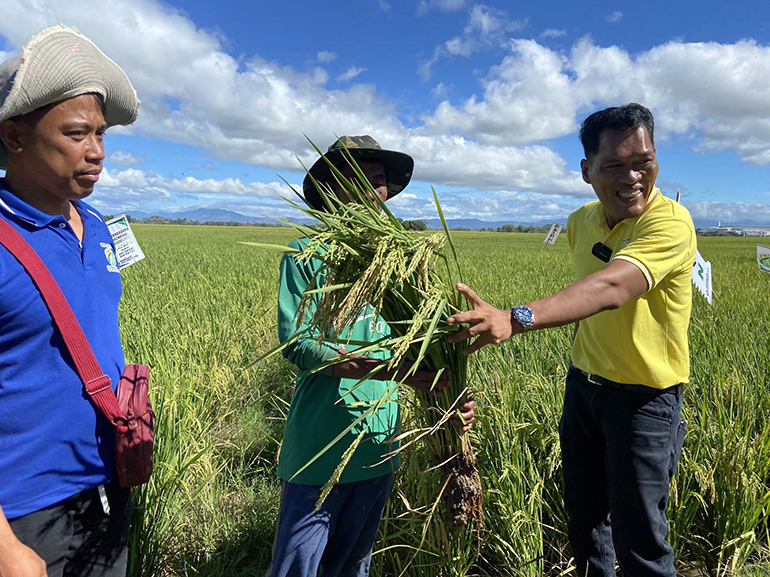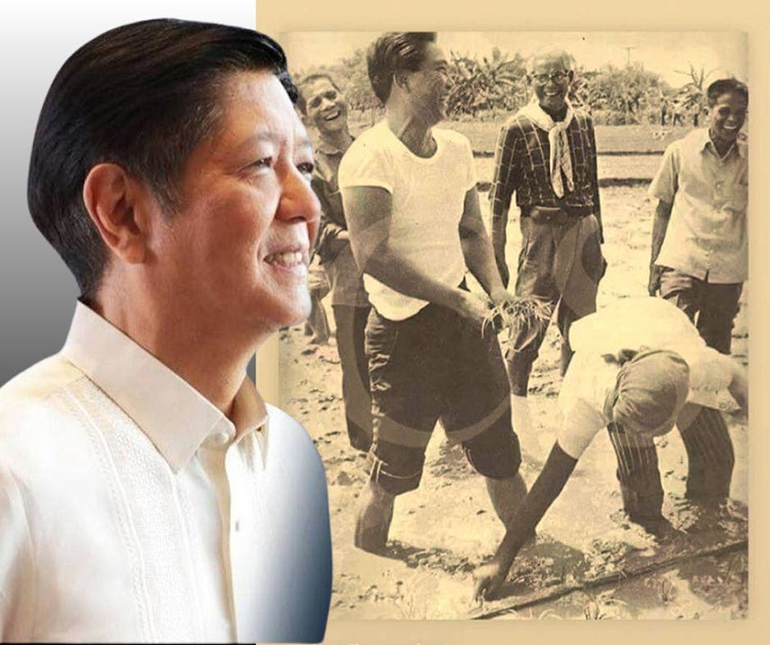
Upgrade to High-Speed Internet for only ₱1499/month!
Enjoy up to 100 Mbps fiber broadband, perfect for browsing, streaming, and gaming.
Visit Suniway.ph to learn

Bio N and the Path to Balanced Fertilization in the Philippines
By JUNEP OCAMPO
“Napapagod na ang lupa.” The soil is getting tired.
From the rice terraces of the Cordilleras to the flood plains of Mindoro and the paddies of Mindanao, this weary lament echoes across the Philippine countryside. Filipino farmers are burdened by shrinking harvests and rising costs. And they speak of fields that no longer respond — even to increasingly expensive chemical fertilizers. Once a symbol of hope, many of these farmlands now yield barely 50 sacks of palay per hectare — half the target of the 1970s Masagana 99 program.
Agricultural scientists have sounded the alarm: the overuse of synthetic inputs — especially nitrogen-rich urea — is pushing the country’s soils into a state of exhaustion. The promise of immediate yield gains has masked deeper consequences: soil acidification, loss of beneficial microbes, and degraded soil structure. It’s a vicious cycle — more inputs, weaker results, higher costs.
But within the ashes of an old crisis lies the seed of renewal.
 AN INNOVATION FROM CRISIS: Dr. Mercedes Garcia was able to isolate the nitrogen-fixing bacteria from the talahib that grew from the lahar-covered fields of Central Luzon after the 1991 Mt. Pinatubo eruption.
AN INNOVATION FROM CRISIS: Dr. Mercedes Garcia was able to isolate the nitrogen-fixing bacteria from the talahib that grew from the lahar-covered fields of Central Luzon after the 1991 Mt. Pinatubo eruption.A Homegrown Solution from Volcanic Soil
In 1991, as Luzon struggled to recover from the devastation of Mount Pinatubo’s eruption, something unexpected grew in the desolate landscape: talahib grass, hardy and resilient. This caught the attention of Dr. Mercedes U. Garcia, a soil microbiologist from the University of the Philippines Los Baños (UPLB). In its roots, she discovered nitrogen-fixing bacteria capable of transforming atmospheric nitrogen into nutrients crops could use.
The discovery led to the creation of Bio N, a Filipino-developed microbial inoculant that enhances soil fertility without the environmental costs of synthetic fertilizers. Produced as a fine powder, Bio N can be applied easily by seed coating, root dipping, or broadcasting — techniques accessible even to smallholder farmers. At just P500 per kilogram, it replaces the nitrogen equivalent of two bags of urea, which cost over P3,000 combined.
More than cost savings, Bio N helps bring the soil back to life, stimulating root growth, increasing pest resistance, and restoring soil health. Field trials show yield increases of up to 15% in rice and 40% in corn.
 SCIENCE HUB: National Scientist Emil Q. Javier (right) and the BIOTECH facility inside UPLB. Above right is the plaque that adorned its entrance.
SCIENCE HUB: National Scientist Emil Q. Javier (right) and the BIOTECH facility inside UPLB. Above right is the plaque that adorned its entrance.Born from a Legacy of Science
Bio N is more than a product of microbiology — it is a living legacy.
In 1982, President Ferdinand E. Marcos Sr. inaugurated the National Institute of Molecular Biology and Biotechnology (BIOTECH) at UPLB, driven by his belief that science and technology were keys to national development. At the height of a global oil and fertilizer crisis, he tasked Filipino scientists with creating local solutions for food security.
Bio N was one of the center’s most promising results. It was an innovation developed by Filipinos, for Filipino farmers. But despite its promise, it remained a footnote in Philippine agriculture. Low awareness, lack of commercial production, and policy neglect stalled its nationwide adoption.
“The vision was clear. But the momentum was lost,” recalls National Scientist Dr. Emil Q. Javier, one of the architects of the program. “Bio N could have changed the game 30 years ago.”
 NEW FACTORY: Bio N is now made in a state-of-the-art facility in Sta. Rosa, Laguna.
NEW FACTORY: Bio N is now made in a state-of-the-art facility in Sta. Rosa, Laguna.The Push for Balanced Fertilization
Now, with a new administration and renewed urgency, that vision is being dusted off and revived.
The Department of Agriculture’s Balanced Fertilization Strategy (BFS) — a blend of organic, inorganic, and biofertilizers—places Bio N at its core. The aim is to restore soil vitality, reduce input costs, and lessen dependency on volatile global fertilizer markets.
In March 2023, UPLB granted exclusive licensing rights to AgriSpecialist, Inc., enabling mass production of Bio N using modern bioreactors in Sta. Rosa, Laguna. Since then, over 100 crop nutrition specialists have been deployed across rice-producing provinces to promote the product and train farmers.
 THE PROOF FROM THE FIELDS: Jerbin Salavador (right) shows the effect of Bio N on rice in Talavera, Nueva Ecija.
THE PROOF FROM THE FIELDS: Jerbin Salavador (right) shows the effect of Bio N on rice in Talavera, Nueva Ecija.Results on the Ground
The results are already visible.
In Talavera, Nueva Ecija, rice farmer-technician Jerbin Salavador saw immediate improvements. “Mas magaan sa bulsa, mas maganda pa ang palay,” he said. His palay had greener leaves, sturdier stalks, and fuller grains. Farmer Ferdinand ‘Amang’ de la Cruz, who tills eight hectares, reported similar gains — enough savings to send two of his children to nursing school.
Their secret? Following the instructions printed on the back of a sachet of Bio N.
Farmer Arnold Jumaquio, who cultivates hybrid rice, said Bio N helped reduce fertilizer expenses while maintaining yields. In Ilocos Norte, Juanito Manuel, an inbred rice grower, echoed the sentiment: “Hindi mo na kailangan magdagdag ng dagdag. Yung lupa, parang gumaan ang paghinga.”
These testimonials suggest not just a shift in practice — but a transformation in mindset. Farmers are learning that healthy soil is not about dumping more chemicals, but about working with nature.
 A MARCOS LEGACY: Bio N is a legacy of the late President Ferdinand Marcos, Sr., who personally funded the establishment of the BIOTECH facility.
A MARCOS LEGACY: Bio N is a legacy of the late President Ferdinand Marcos, Sr., who personally funded the establishment of the BIOTECH facility.Policy, Procurement, and Presidential Will
Economist and former NEDA Secretary Dr. Cielito Habito believes now is the time to scale up. The recently signed Tatak Pinoy Act (RA 11981) mandates government procurement to favor Filipino innovations — a policy tailor-made for Bio N.
“This is the perfect moment for government to walk the talk,” said Habito. “Support for Bio N ticks all the boxes: Filipino-made, cost-effective, environmentally sound.”
But more than procurement, advocates say what’s needed is political will — and a president willing to fulfill a scientific vision begun more than four decades ago.
President Ferdinand “Bongbong” Marcos Jr., in his 2024 State of the Nation Address, called on agencies to promote homegrown technology for food security. The rollout of Bio N may be the perfect opportunity to make good on that promise.
“Completing this project would not only honor his father’s legacy,” said Dr. Javier, “it would help future-proof Philippine agriculture.”
A Soil Reborn
With global fertilizer prices once again spiking due to geopolitical tensions and oil price hikes, the stakes are high. The Philippine rice farmer cannot afford to remain trapped in a system of expensive inputs and diminishing returns.
Fortunately, the solution may already be in our hands — rooted in our own volcanic soil, born from Filipino science, and tested by Filipino farmers.
Bio N is not just a biofertilizer. It is a second chance — to heal the soil, empower farmers, and finish what was started in 1982.
Spotlight is BusinessWorld’s sponsored section that allows advertisers to amplify their brand and connect with BusinessWorld’s audience by publishing their stories on the BusinessWorld Web site. For more information, send an email to online@bworldonline.com.
Join us on Viber at https://bit.ly/3hv6bLA to get more updates and subscribe to BusinessWorld’s titles and get exclusive content through www.bworld-x.com.




